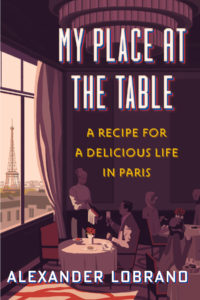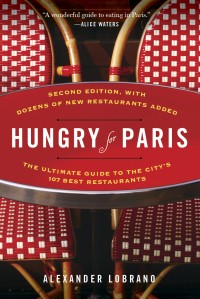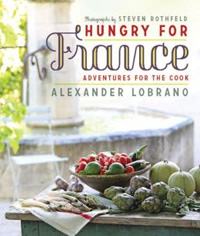Chamarre: Fabulous Fusion in Montmartre, B+
Since I always enjoyed Chamarre when it was rather incongruously located in the 7th arrondissement–the warmth and sensuality of the cooking always seemed rather at odds with the uber bourgeois fastness of the Avenue Lowendahl, I was delighted when exceptionally talented chef Antoine Heerah reopened his restaurant in Montmartre in the premises formerly occupied by Beauvilliers. Heerah, a generous, jovial Mauritian of Indian descent, practices one of the most guileless, intelligent and original fusion cuisines currently available in Paris. What he’s basically done is deconstruct all of the disparate elements of the Mauritian kitchen–French, English, Portuguese, Chinese, African and most of all Indian, and then put them back together again using his considerable technical skills as a classically trained French chef.
Though it’s a favorite Indian Ocean getaway destination for the French, Mauritius is little-known to non-Europeans. Originally colonized by the Dutch, the fertile green island was traded back and forth between France and Britain several times before becoming a important coaling station for the British Empire. For much of its history, its most important crop was sugar cane, and the need for field hands explains the country’s ethnic diversity. When slavery was abolished, indentured Indians were brought in to harvest the cane on the large plantations owned by a small elite of mostly French ancestry. The Chinese arrived as shop keepers, enriching a population that was also spiced with a smattering of AWOL sailors from American whaling ships and British naval vessels and later, South Africans and Portuguese fleeing the civil wars of that country’s former African colonies. Tidy, literate and strikingly beautiful, Mauritius today is prosperous, pleasant, French-speaking place that lives off of tourism since the sugar plantations became economically no longer viable. (Should you go, by the way, don’t miss the spectacular Bauhaus tea-processing factory that was designed by a Berlin architect who was among a shipload of Jewish exiles that Mauritius accepted over British objections and housed and fed during World War II).
Even if you knew none of this background, you’d be able to parse it out from the menu at Chamarre. The Mauritian kitchen is based on seafood, especially octopus and deep-water ocean fish, but also plump fresh-water prawns known locally as camarons. The island’s pantry includes coconuts, mangoes, curry leaves, tumeric, ginger, cumin and a variety of Indian condiments, including pickled green mangos known as achards and chatnis (various local version of Chutney). China shows up in the island’s love of “mee,” the local word for noodles, and distant echoes of the high Victorian British empire come through in its love of old-fashioned steamed “puddings” and other Mrs. Beeton style desserts. Before tourism created a market for air-freighted produce from South Africa, the island lived off of its own relatively sparse produce supplemented by imported canned goods (corned beef, condensed milk, tomato sauce, baked beans) from Britain and other Commonwealth countries.
Heerah’s cuisine mirrors the Cinderella-like transformation of the remote island into a jet-set destination with an honest respect for its traditional culinary heritage and a stunningly modern layering of flavors and tastes. Going to dinner here the other night on what is surely one of the loveliest outdoor terraces in Paris, a lovely quiet flower-filled balcony adjacent to the restaurant, I was impressed all over again by the ingenuity of Heerah’s cooking, which he’s planed down a bit since a slightly bumpy opening. As she never stops telling me, my Breton friend Michele likes “good, simple food–nothing too fussy,” so I wondered how she’d react to Heerah’s spring menu–very well indeed as it turned. She started with a mixture of spring vegetables–peas, fava beans, baby onions, asparagus and salad leaves in a “Mauritian pesto” spiked with ginger and curry leaves, and absolutely loved it, while my shrimp prepared three ways–wrapped in pastry filaments with curry leaves, chopped in a bouillon made from their shells, and marinated with tangelolo were superb. Next maigre (a firm mild white fish) with a Romanesco sauce and tiny artichokes in deeply reduced chicken stock for Michele, and steamed yellow pollack with a “tatin” of Noirmoutier potatoes with limequats for me. Both dishes were light, vivid, fresh and wonderfully originally, as was the sublime Basmati rice milk ice cream that came with the savarin that we shared for dessert. The service was the only fly-in-the-ointment of an otherwise delightful meal–poorly trained waiters and a haughty hostess who suffered from what Michele correctly diagnosed as “syndrome du Palace,” or a psychological pose of exasperated superiority vis a vis those one has no choice but to serve. Though annoying, this was a minor blemish on an excellent meal, especially in such a wonderful setting, and I look forward to returning again soon. 52 rue Lamarck, 18th, Tel. 01.42.55.05.42. Metro: Lamarck-Caulaincourt. Open daily.




